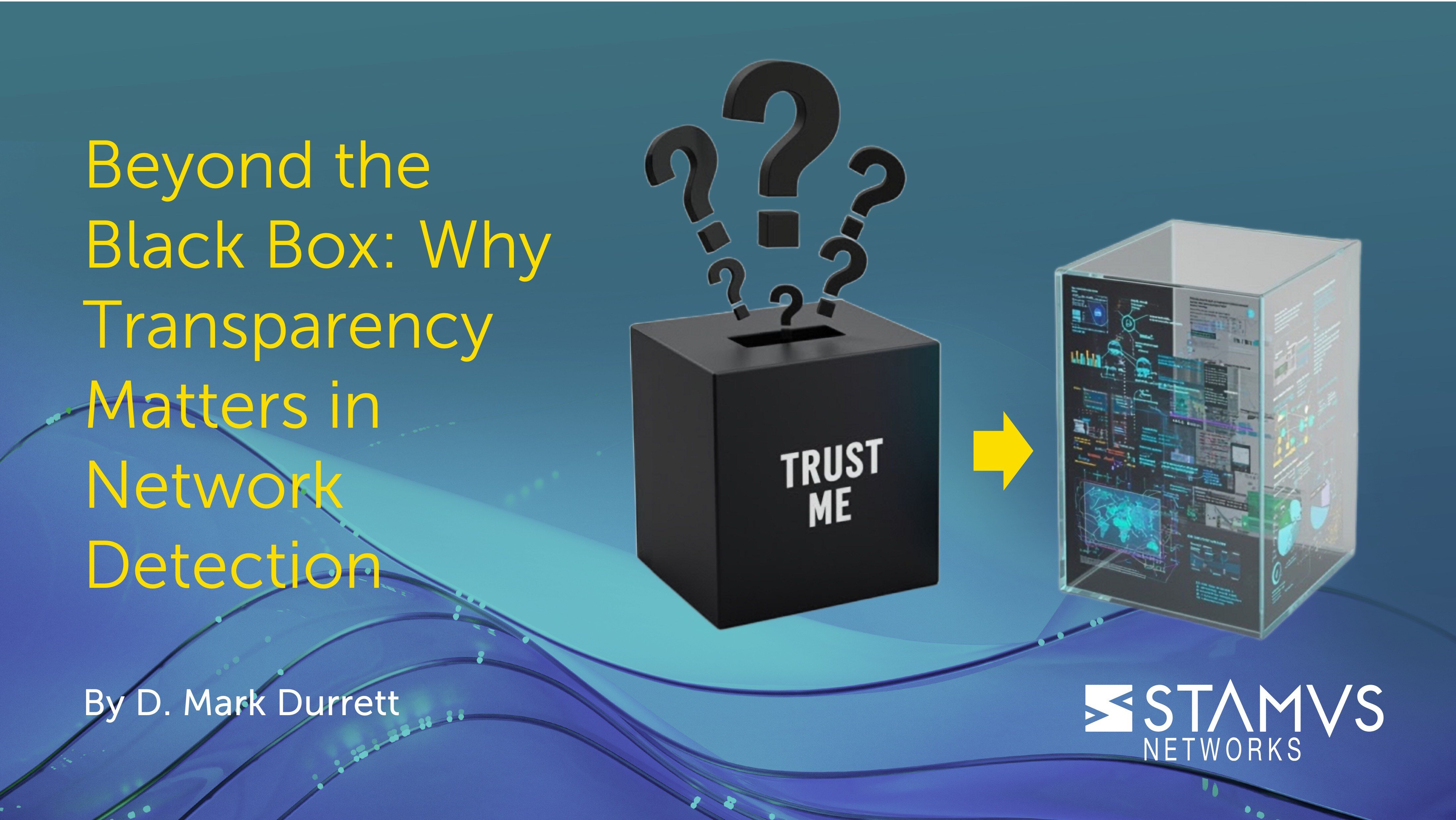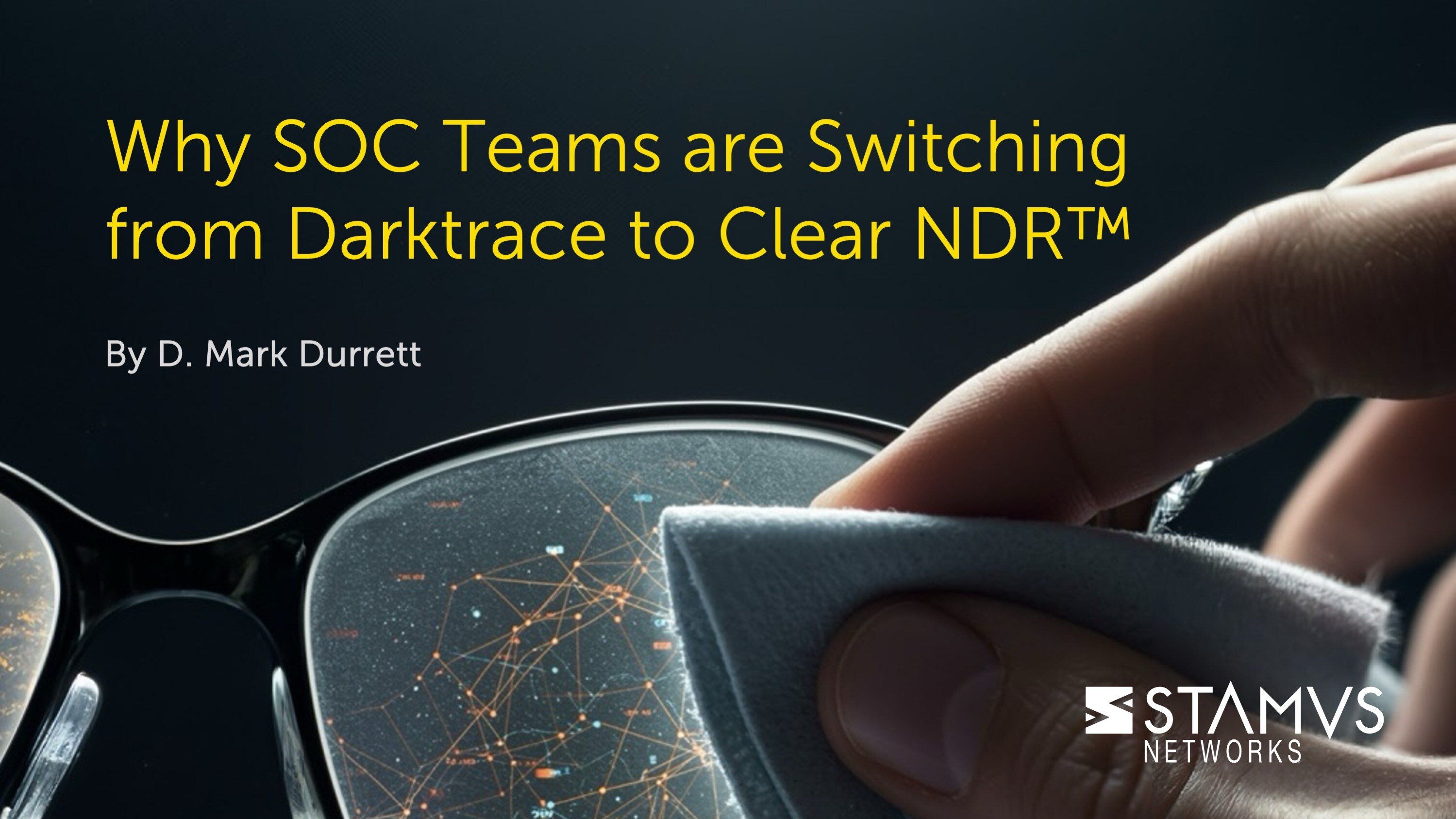Network detection and response (NDR) is a growing product category in cybersecurity. If you are beginning your NDR journey, you may not know what to look for in an NDR vendor. Purchasing an NDR is not just about buying a product, but also about the relationship between your organization and the NDR provider you select.
What is an NDR provider?
NDR providers (also known as NDR vendors) are companies or organizations that offer network detection and response solutions. These NDR vendors typically develop and offer software or hardware solutions that help organizations detect and respond to security incidents within their networks.
NDR solutions may include features such as real-time monitoring, behavior analytics, threat intelligence integration, automated response capabilities, and AI or machine learning threat detection methods.
While each NDR vendor offers a different product with different capabilities, limitations, and requirements, a mature NDR solution will have the following characteristics:
- Sophisticated detection
- Transparent, explainable results with evidence
- High-fidelity response triggers
- Guided threat hunting
- Openness and extensibility
- Complete data sovereignty
When looking for an NDR vendor to support your organization’s needs, it is important to consider the differences between each solution to determine which will be the best fit.
What does an NDR do?
NDR solutions address cybersecurity challenges that could impact an organization’s ability to protect its network, assets, and data. To better understand the role of NDR, consider the following network detection and response use cases:
- Advanced Threat Detection: Traditional security measures struggle to identify advanced threats, but NDR overcomes this limitation. By utilizing advanced analytics, machine learning, and behavioral analysis, NDR can detect unusual patterns and behaviors. This proactive approach enables early identification of sophisticated threats such as zero-day exploits and advanced persistent threats (APTs).
- Visibility and Context: NDR offers comprehensive visibility into network activities, shedding light on user behavior, device interactions, and application usage. This contextual information is essential for effective threat detection and response, empowering organizations to understand the dynamics within their networks.
- Real-time Network Monitoring: Operating in real-time, NDR enables continuous monitoring of network activities. This capability significantly reduces "dwell time” — the duration a threat goes undetected. As a result, it minimizes the potential impact of security incidents by swiftly identifying and responding to threats.
- Insider Threats: NDR excels at identifying unusual user behaviors that may indicate insider threats or compromised accounts. Through continuous monitoring and establishing baselines for normal behavior, NDR solutions can detect deviations that signal malicious intent or unauthorized access.
- Improved Incident Response Time: NDR automates certain actions and provides timely alerts to cybersecurity teams, facilitating rapid incident response. This swift response is critical for preventing the escalation of security incidents and minimizing the damage caused by a breach.
- Adaptability to Evolving Threats: In the dynamic cybersecurity landscape, new threats emerge regularly. NDR's adaptive nature, employing mechanisms like machine learning and updated threat intelligence, allows organizations to stay ahead of evolving threats by dynamically adjusting to new attack vectors and tactics.
- Reducing False Positives: NDR employs sophisticated analytics to minimize false positives. This ensures that security teams focus on genuine threats, enhancing the efficiency of cybersecurity operations by avoiding unnecessary investigations into benign events.
Which Gartner report shows NDR is becoming mainstream?
The “2022 Market Guide for Network Detection and Response” is the most recent Gartner report that suggests NDR is becoming more mainstream. This Gartner NDR market guide claims that the network detection and response market is growing steadily at a 22.5% rate.
Gartner first recognized network detection and response as a market category in 2020. Since then, they have also published other helpful reports such as the “2023 Top Use Cases for NDR” and the “2023 Voice of the Customer for Network Detection and Response”. It is important to note that Gartner’s reports cannot be accessed without becoming a Gartner client.
Gartner is well-known for their “magic quadrant”. This chart places different cybersecurity vendors based on their “completeness of vision” and “ability to execute”, leading each vendor to be placed in one of four categories: niche players, visionaries, challengers, and leaders.
Currently, there is no NDR Gartner magic quadrant for 2023, however it is hopeful that one might be included in future reports. For now, the best option is to identify the challenges NDR can solve and determine whether those challenges are faced by your organization. If so, NDR might be a good fit for your security strategy.
Why use NDR?
Organizations should use NDR tools because they provide a vast set of features that enable the swift identification and mitigation of potential threats. By using an NDR, organizations put themselves in a better position to respond effectively to the threats and threat actors that seek to harm them. Here are several benefits provided by NDR tools:
- Advanced Threat Detection: NDR tools leverage behavioral analysis, signature-based detection, and machine learning techniques to detect and identify sophisticated threats, zero-day attacks, and advanced malware that may evade traditional security measures.
- Passive Monitoring: NDRs are non-intrusive, inspecting a copy of the network traffic from a packet broker or mirror port. This allows organizations to gain real-time insights and detect potential threats without impacting network performance or disrupting operations.
- Anomaly Detection: NDR tools analyze network traffic patterns and behaviors to detect anomalies, helping organizations identify potential security breaches, unauthorized activity, and insider threats.
- Lateral Movement Detection: NDR tools can identify lateral movement within the network, helping organizations detect and prevent the spread of threats from one system or user to another, enhancing overall network security.
- Agentless Deployment: Unlike Endpoint Detection and Response (EDR) systems, NDR is agentless. This eliminates the need to install software on individual endpoints, simplifying deployment and reducing maintenance and support overhead. This is especially beneficial in environments where there are no typical endpoints, such as an organization that supports a bring-your-own-device (BYOD) model, an Internet of Things (IoT) environment, and military, medical, or industrial control systems.
- Forensic Analysis: NDR tools provide detailed network logs, file extraction, packet capture, and other critical event metadata, aiding in incident investigation and forensic analysis. This helps users understand the attack methodology, support legal proceedings, and prevent future incidents.
- Threat Hunting: NDR facilitates proactive threat-hunting activities by allowing security teams to search for potential threats, identify novel or unknown malware, and uncover malicious or unauthorized activities that may have evaded other security measures.
- Compliance and Regulatory Requirements: NDR provides the necessary visibility, logging, and reporting capabilities to meet compliance obligations, ensuring organizations adhere to industry regulations and data protection standards.
- Network Performance Optimization: NDR tools can offer insights into network performance, including traffic patterns, bandwidth utilization, and application performance, helping organizations optimize their network infrastructure and enhance overall efficiency.
- Network Hygiene Auditing: NDR can provide insights into the health of an organization’s network systems. By continuously monitoring traffic, organizations can better identify and address potential security risks, misconfigurations, and vulnerabilities.
Stamus Networks: Your NDR Vendor
There are a lot of NDR vendors to choose from, and that choice can make a large impact on your organization’s cybersecurity posture. Stamus Networks is a global provider of high-performance network-based threat detection and response (NDR) systems. Our solution, the Stamus Security Platform, helps enterprise security teams know more, respond sooner, and mitigate threats.
For an overview of the Stamus Security Platform, view this datasheet.
If you are in the market for NDR, schedule a call below with one of our experts to see if SSP is a fit for your organization.
To be notified of new blog posts and other news, make sure to subscribe to the Stamus Networks blog and the Stamus Spotlight Monthly Newsletter, follow us on Twitter, LinkedIn, and Facebook, or join our Discord.






